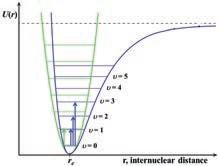1.1.
2.1.
Malek, Emilia Staniszewska-Ślęzak, Kamila Kochan, Katarzyna Majzner)
5.2.
4.1.1.
4.1.2.
6.1. An effect of molecular symmetry and isotopic substitution on IR and Raman spectra of chloromethane derivatives (Kamilla Malek, Katarzyna M. Marzec) .................................
6.2. Peak-fitting process by an example of ATR FT-IR spectra of soft tissues (Marlena Gąsior-Głogowska, Adam Oleszko)
6.3. Synthesis and spectral characteristics of hydroxyapatites (Marlena Gąsior-Głogowska, Adam Oleszko)
6.3.1. Hydroxyapatites
6.3.2.
6.4. The application of infrared spectroscopy for the determination of petroleum hydrocarbons in surface water and wastewater (Paweł Miśkowiec) ...............................................
6.4.1. The composition of crude oil; environment pollution with petroleum products ..................................
6.4.2. The toxic properties of the components of crude oil .............
6.4.3. Legislation concerning problems of environmental pollution with petroleum products and methods of its measurement .......
6.4.4. An application of IR spectroscopy in analytical chemistry
6.4.5. Nernst distribution law ...................................
6.5. Determination of absolute configuration using vibrational circular dichroism (Piotr F. J. Lipiński) ......................................
6.5.1. Determination of absolute configuration via VCD ..............
6.6. The identification of painting materials and degradation products. FT-IR imaging of paint layers (Emilia Staniszewska-Ślęzak, Kamilla Malek) ....
6.6.1. Chemical characteristics of a paint layer and products of its
6.6.2. FT-IR spectroscopy as a technique used in the identification of chemical composition of artworks .........................
6.7. Structural analysis of proteins by means of FT-IR spectroscopy (Katarzyna
6.7.2. Application of FT-IR spectroscopy to studying
6.8. Structural analysis of lipids by using infrared spectroscopy (Tomasz
of
6.9. Structural analysis of carbohydrates by means of FT-IR spectroscopy (Kamilla
6.10. An analysis of ATR FT-IR spectra of animal tissues (Emilia Staniszewska-Ślęzak, Kamilla Malek
6.11.
7.1. The identification of proteins secondary structure in Raman spectra (Anna Rygula)
7.1.3. Other techniques of Raman spectroscopy for the analysis of proteins .............................................
7.2. Raman analysis of fatty acids (Aleksandra Jaworska, Małgorzata Barańska) .... 150
7.2.1. Occurrence and characteristics of fatty acids ...................
7.2.2. An application of Raman spectroscopy in an analysis of fatty acids ............................................
7.3. Raman spectroscopy as a method to analyze lipids in animal tissues and mixtures (Krzysztof Czamara, Agnieszka Kaczor) .....................
7.3.1. Classification of lipids ....................................
7.3.2. Spectroscopic characteristics of lipids ........................
7.4. Polymorphism of model triacylgliceroles (Marta Z. Pacia, Krzysztof Czamara, Agnieszka Kaczor) ....................
7.4.1. Polymorphism of lipids ...................................
7.4.2. Spectroscopic characteristics of TAGs polymorphs ..............
7.5. Identification of carotenoids in plants by means of Raman spectroscopy (Aleksandra Jaworska, Małgorzata Barańska) ............................
7.5.1.
7.5.2.
7.6. Identification of terpenes in citrus oils by means of Raman spectroscopy (Aleksandra Jaworska, Małgorzata Barańska, Kamilla Malek)
7.6.1. Essential oils – occurrence and composition
7.6.2. Identification of essential oils by means of gas chromatography and Raman spectroscopy
7.6.3.
7.7. An analysis of pigments and painting materials in Raman spectra (Anna Rygula, Kamilla Malek) ....................................... 174
7.7.1. Raman spectroscopy as an analytic technique in conservation of art
7.7.2. Structure of paint layers ..................................
7.7.3. Methodology of a Raman analysis of works of arts ..............
7.8. Detection and determination of glucose in pharmaceuticals and body fluids (Agnieszka Kaczor) ...............................................
7.9. Resonance Raman scattering spectroscopy in hemoglobin structure studies (Jakub Dybaś, Antonina Chmura-Skirlińska, Katarzyna M. Marzec) ............
7.9.1. Structure and physiology of hemoglobin ......................
7.9.2. Resonance Raman scattering spectroscopy in hemoglobin studies ................................................
7.9.3. UV-Vis absorption spectrophotometry in hemoglobin studies
7.10. Identification of enantiomers of bornyl acetate and a-pinene in essential oils from the Siberian fir needles (Katarzyna Chruszcz-Lipska) ............. 192
7.10.1. Terpenes ...............................................
7.10.2. Stereochemistry of terpenes ...............................
7.10.3. Enantiomeric contents of terpenes in essential oils .............
7.10.4. Raman optical activity spectra of terpenes ....................
7.11. Determination of absolute configuration of a-pinene enantiomers by means of Raman optical activity and quantum chemical calculations (Grzegorz Zając, Małgorzata Barańska) ................................ 198
7.11.1. Theoretical calculations of ROA ............................ 198
7.12 Estimation of surface enhancement factor and adsorption studies of 3-amino-5-mercapto-1,2,4-triazole (AMT) on silver using surface-enhanced raman scattering spectroscopy (SERS) (Agata Królikowska, Jolanta Bukowska) ................................ 204
7.12.1. Surface enhancement factor in SERS ......................... 204
7.12.1.1. Types of definition of enhancement factor ............. 205
7.12.1.2. Enhancement factor for a given substrate (EF) ......... 205
7.12.1.3. Analytical enhancement factor (AEF) ................ 206
7.12.1.4. Single molecule enhancement factor (SMEF) .......... 206
7.12.2. The most common sources of errors in the determined values of SERS enhancement factors .............................. 207
7.12.3. Structure and properties of 3-amino-5-mercapto-1,2,4-triazole (AMT) ................................................ 207
7.12.4. SERS spectrum of 3-amino-5-mercapto-1,2,4-triazole (AMT) on silver substrate ....................................... 208
7.13. Identification and studying of distribution of caffeine in drug samples in situ (Małgorzata Barańska, Agnieszka Kaczor, Kamilla Malek) ................... 212
7.14. Characteristics of the cell organelles based on analysis of marker bands and cluster analysis (Katarzyna Majzner) ............................. 215
7.14.1. The assignment of the major Raman bands in the cell spectra ..... 216
7.14.2. An analysis of Raman imaging of cells ....................... 218
7.15. In vitro and in vivo Raman imaging of unicellular carotenoid producers (Marta Z. Pacia, Agnieszka Kaczor) ................................... 220
7.15.1. Spectral characteristics of cells compartments ................. 221










Vibrational spectroscopy. From theory to practice
Editor Kamilla Malek
AUTHORS
Barańska Małgorzata, Prof., PhD, DSc
Faculty of Chemistry, Jagiellonian University in Krakow
Bukowska Jolanta, Prof., PhD, DScFaculty of Chemistry, University of Warsaw
Chmura-Skirlińska Antonina, PhDJagiellonian Centre for Experimental Therapeutics (JCET), Jagiellonian University in Krakow
Chruszcz-Lipska Katarzyna, PhDAGH University of Science and Technology, Faculty of Drilling, Oil and Gas
Czamara Krzysztof, MSc
Dybaś Jakub, MSc
Faculty of Chemistry, Jagiellonian University in Krakow
Faculty of Chemistry, Jagiellonian University in Krakow
Gąsior-Głogowska Marlena, PhD, Eng.Faculty of Fundamental Problems of Technology, Wroclaw University of Science and Technology
Jaworska Aleksandra, PhD
Kaczor Agnieszka, PhD, DSc
Kochan Kamila, MSc
Królikowska Agata, PhD
Lipiński Piotr, F.J., PhD
Majzner Katarzyna, PhD
Malek Kamilla, PhD, DSc
Marzec Katarzyna M., PhD
Miśkowiec Paweł, PhD
Oleszko Adam, MSc, Eng.
Pacia Marta Z., MSc
Rode Joanna, PhD
Ryguła Anna, PhD
Staniszewska-Ślęzak Emilia, MSc
Wiercigroch Ewelina, MSc
Wróbel Tomasz, PhD
Zając Grzegorz, MSc
Faculty of Chemistry, Jagiellonian University in Krakow
Faculty of Chemistry, Jagiellonian University in Krakow
Faculty of Chemistry, Jagiellonian University in Krakow
Faculty of Chemistry, University of Warsaw
Mossakowski Medical Research Centre, Polish Academy of Sciences
Faculty of Chemistry, Jagiellonian University in Krakow
Faculty of Chemistry, Jagiellonian University in Krakow
Jagiellonian Centre for Experimental Therapeutics (JCET), Jagiellonian University in Krakow
Faculty of Chemistry, Jagiellonian University in Krakow
Faculty of Fundamental Problems of Technology, Wroclaw University of Science and Technology
Faculty of Chemistry, Jagiellonian University in Krakow
1. Institute of Nuclear Chemistry and Technology
2. Institute of Organic Chemistry, Polish Academy of Sciences
Jagiellonian Centre for Experimental Therapeutics (JCET), Faculty of Chemistry, Jagiellonian University in Krakow
Faculty of Chemistry, Jagiellonian University in Krakow
Faculty of Chemistry, Jagiellonian University in Krakow
Faculty of Chemistry, Jagiellonian University in Krakow
Faculty of Chemistry, Jagiellonian University in Krakow
Cover and title page design: Marek Goebel
Project editor:
Katarzyna Włodarczyk-Gil
Editorial coordinator: Iwona Lewandowska
Copy editor: Łukasz Boda
Production coordinator: Mariola Grzywacka
Edited by: Kamilla Malek, Faculty of Chemistry, Jagiellonian University
DTP: Dariusz Ziach
The publication was co-funded by the Faculty of Chemistry of the Jagiellonian University in Krakow
The book that you have purchased is the work of its author and publisher. Please respect their rights. You may make this book available free of charge to your family and friends, but do not publish it on the net. If you quote excerpts from it, do not change the original and always be sure to mention where they come from. And if you copy parts of it, do so only for your own use. It is imperative that we respect other people’s rights and property. See more on www.legalnakultura.pl
Polska Izba Książki
Copyright © by Wydawnictwo Naukowe PWN SA Warszawa 2016
ISBN 978-83-01-18885-6
First edition
Wydawnictwo Naukowe PWN SA 02-460 Warszawa, ul. Gottlieba Daimlera 2 tel. 22 69 54 321, faks 22 69 54 288
infolinia 801 33 33 88
e-mail: pwn@pwn.com.pl; reklama@pwn.pl
Printed and bound by
1.1.
2.1.
Malek, Emilia Staniszewska-Ślęzak, Kamila Kochan, Katarzyna Majzner)
4.1.
4.1.1.
4.1.2.
4.2.
5.2.
6.1. An effect of molecular symmetry and isotopic substitution on IR and Raman spectra of chloromethane derivatives (Kamilla Malek, Katarzyna M. Marzec) .................................
6.2. Peak-fitting process by an example of ATR FT-IR spectra of soft tissues (Marlena Gąsior-Głogowska, Adam Oleszko)
6.3. Synthesis and spectral characteristics of hydroxyapatites (Marlena Gąsior-Głogowska, Adam Oleszko)
6.3.1.
6.3.2.
6.4. The application of infrared spectroscopy for the determination of petroleum hydrocarbons in surface water and wastewater (Paweł Miśkowiec) ...............................................
6.4.1. The composition of crude oil; environment pollution with petroleum products ..................................
6.4.2. The toxic properties of the components of crude oil .............
6.4.3. Legislation concerning problems of environmental pollution with petroleum products and methods of its measurement .......
6.4.4. An application of IR spectroscopy in analytical chemistry
6.4.5. Nernst distribution law ...................................
6.5. Determination of absolute configuration using vibrational circular dichroism (Piotr F. J. Lipiński) ......................................
6.5.1. Determination of absolute configuration via VCD ..............
6.6. The identification of painting materials and degradation products. FT-IR imaging of paint layers (Emilia Staniszewska-Ślęzak, Kamilla Malek) ....
6.6.1. Chemical characteristics of a paint layer and products of its
6.6.2. FT-IR spectroscopy as a technique used in the identification of chemical composition of artworks .........................
6.7. Structural analysis of proteins by means of FT-IR spectroscopy (Katarzyna
Application of FT-IR spectroscopy to
6.8. Structural analysis of lipids by using infrared spectroscopy (Tomasz
of
6.9. Structural analysis of carbohydrates by means of FT-IR spectroscopy (Kamilla
6.10. An analysis of ATR FT-IR spectra of animal tissues (Emilia Staniszewska-Ślęzak, Kamilla Malek
7.1. The identification of proteins secondary structure in Raman spectra (Anna Rygula)
7.1.3. Other techniques of Raman spectroscopy for the analysis of proteins .............................................
7.2. Raman analysis of fatty acids (Aleksandra Jaworska, Małgorzata Barańska) .... 150
7.2.1. Occurrence and characteristics of fatty acids ...................
7.2.2. An application of Raman spectroscopy in an analysis of fatty acids ............................................
7.3. Raman spectroscopy as a method to analyze lipids in animal tissues and mixtures (Krzysztof Czamara, Agnieszka Kaczor) .....................
7.3.1. Classification of lipids ....................................
7.3.2. Spectroscopic characteristics of lipids ........................
7.4. Polymorphism of model triacylgliceroles (Marta Z. Pacia, Krzysztof Czamara, Agnieszka Kaczor) ....................
7.4.1. Polymorphism of lipids ...................................
7.4.2. Spectroscopic characteristics of TAGs polymorphs ..............
7.5. Identification of carotenoids in plants by means of Raman spectroscopy (Aleksandra Jaworska, Małgorzata Barańska) ............................
7.5.1.
7.6. Identification of terpenes in citrus oils by means of Raman spectroscopy (Aleksandra Jaworska, Małgorzata Barańska, Kamilla Malek)
7.6.1. Essential oils – occurrence and composition
7.6.2. Identification of essential oils by means of gas chromatography and Raman spectroscopy
7.6.3.
7.7. An analysis of pigments and painting materials in Raman spectra (Anna Rygula, Kamilla Malek) ....................................... 174
7.7.1. Raman spectroscopy as an analytic technique in conser vation of art
7.7.2. Structure of paint layers ..................................
7.7.3. Methodology of a Raman analysis of works of arts ..............
7.8. Detection and determination of glucose in pharmaceuticals and body fluids (Agnieszka Kaczor) ...............................................
7.9. Resonance Raman scattering spectroscopy in hemoglobin structure studies (Jakub Dybaś, Antonina Chmura-Skirlińska, Katarzyna M. Marzec) ............ 185
7.9.1. Structure and physiology of hemoglobin ......................
7.9.2. Resonance Raman scattering spectroscopy in hemoglobin studies ................................................
7.9.3. UV-Vis absorption spectrophotometry in hemoglobin studies .....
7.10. Identification of enantiomers of bornyl acetate and a-pinene in essential oils from the Siberian fir needles (Katarzyna Chruszcz-Lipska) ............. 192
7.10.1. Terpenes ...............................................
7.10.2. Stereochemistry of terpenes ...............................
7.10.3. Enantiomeric contents of terpenes in essential oils .............
7.10.4. Raman optical activity spectra of terpenes ....................
7.11. Determination of absolute configuration of a-pinene enantiomers by means of Raman optical activity and quantum chemical calculations (Grzegorz Zając, Małgorzata Barańska) ................................ 198
7.11.1. Theoretical calculations of ROA ............................ 198
7.12 Estimation of surface enhancement factor and adsorption studies of 3-amino-5-mercapto -1,2,4-triazole (AMT) on silver using surface-enhanced raman scattering spectroscopy (SERS) (Agata Królikowska, Jolanta Bukowska) ................................ 204
7.12.1. Surface enhancement factor in SERS ......................... 204
7.12.1.1. Types of definition of enhancement factor ............. 205
7.12.1.2. Enhancement factor for a given substrate (EF) ......... 205
7.12.1.3. Analytical enhancement factor (AEF) ................ 206
7.12.1.4. Single molecule enhancement factor (SMEF) .......... 206
7.12.2. The most common sources of errors in the determined values of SERS enhancement factors .............................. 207
7.12.3. Structure and properties of 3-amino-5-mercapto -1,2,4-triazole (AMT) ................................................ 207
7.12.4. SERS spectrum of 3-amino-5-mercapto -1,2,4-triazole (AMT) on silver substrate ....................................... 208
7.13. Identification and studying of distribution of caffeine in drug samples in situ (Małgorzata Barańska, Agnieszka Kaczor, Kamilla Malek) ................... 212
7.14. Characteristics of the cell organelles based on analysis of marker bands and cluster analysis (Katarzyna Majzner) ............................. 215
7.14.1. The assignment of the major Raman bands in the cell spectra ..... 216
7.14.2. An analysis of Raman imaging of cells ....................... 218
7.15. In vitro and in vivo Raman imaging of unicellular carotenoid producers (Marta Z. Pacia, Agnieszka Kaczor) ................................... 220
7.15.1. Spectral characteristics of cells compartments ................. 221



